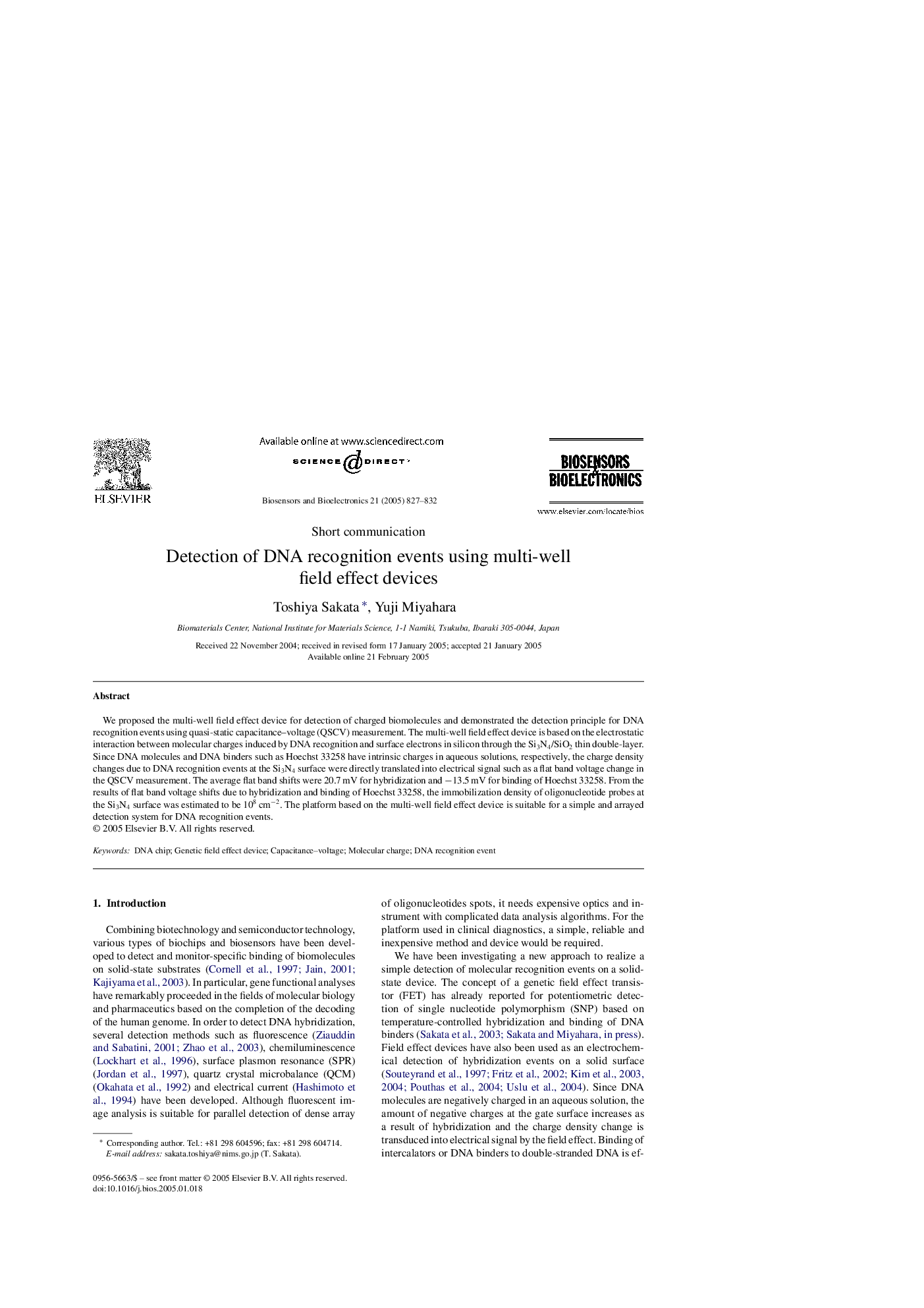| Article ID | Journal | Published Year | Pages | File Type |
|---|---|---|---|---|
| 10430115 | Biosensors and Bioelectronics | 2005 | 6 Pages |
Abstract
We proposed the multi-well field effect device for detection of charged biomolecules and demonstrated the detection principle for DNA recognition events using quasi-static capacitance-voltage (QSCV) measurement. The multi-well field effect device is based on the electrostatic interaction between molecular charges induced by DNA recognition and surface electrons in silicon through the Si3N4/SiO2 thin double-layer. Since DNA molecules and DNA binders such as Hoechst 33258 have intrinsic charges in aqueous solutions, respectively, the charge density changes due to DNA recognition events at the Si3N4 surface were directly translated into electrical signal such as a flat band voltage change in the QSCV measurement. The average flat band shifts were 20.7Â mV for hybridization and â13.5Â mV for binding of Hoechst 33258. From the results of flat band voltage shifts due to hybridization and binding of Hoechst 33258, the immobilization density of oligonucleotide probes at the Si3N4 surface was estimated to be 108Â cmâ2. The platform based on the multi-well field effect device is suitable for a simple and arrayed detection system for DNA recognition events.
Related Topics
Physical Sciences and Engineering
Chemistry
Analytical Chemistry
Authors
Toshiya Sakata, Yuji Miyahara,
